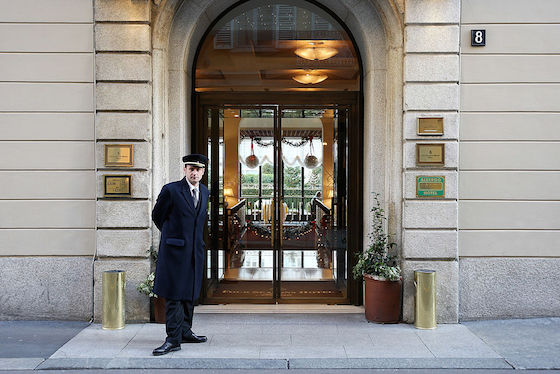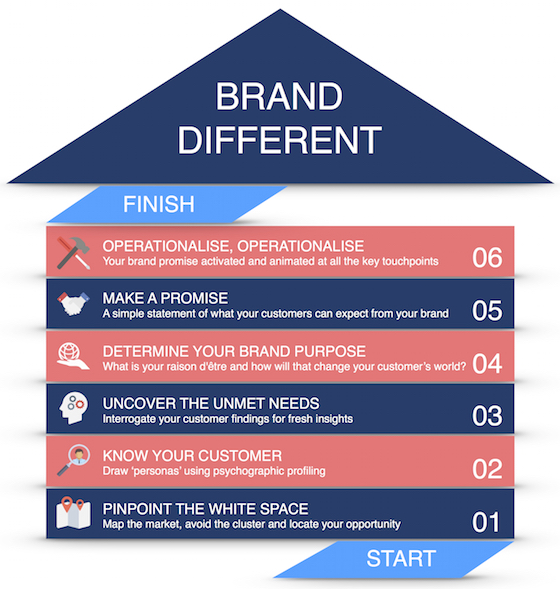
In my piece, “The proliferation of lifestyle brands: Differentiate or die,” I highlighted the lack of differentiation among the burgeoning number of new hotel brands and concluded by counseling that all new brands, regardless of segment, must work harder to cultivate genuine points of differentiation.
So, how do you cultivate difference? How should you develop a brand proposition that is truly special and different – special to your customers and different from your competitors? Here are six steps to achieve that distinction:
1. Pinpoint the white space
To differentiate anything, you need to identify from what. You need to understand the competition: who do they target, what is their promise, what are their relevant points of distinction and how much do they charge? Equipped with this data, you can map the market and pinpoint the white space. This is your opportunity. Avoid the cluster – it leads directly to a “me-too” concept. Find and confidently occupy the gap, and you have the basis for a successful brand with inherent longevity.
2. Know your customer
It is impossible to define who you are, what you do, how you do it and where you are going without knowing your customer precisely. Too many new brands fall into the trap of blanket targeting millennials, an incredibly large and diverse section of the population, which serves very poorly as a segmentation. People from 25 to 37 years old is not a target. Your customer profile should be drawn using psychographics: their attitudes, distinct wants, needs and the behaviors that arise.
Who are they, where do they live, work, play? What are their hopes, fears and aspirations? What’s the world like in which they live? Developing “personas” that are richer than mere demographic statements will enable you to develop a concept that genuinely speaks to your customer.

3. Uncover the unmet needs
For a brand to be genuinely different, ideally it should meet needs that other brands do not or cannot. Now, with your customer defined and their world explored, interrogate your findings for fresh insights into the unmet needs of your personas.
Don’t be seduced by trend forecasters with their guarantees of future salvation. You don’t need another generic report to know that travelers prefer experiences over products or that wellness is the next big thing. Instead, take responsibility for designing the future you want; otherwise you’ll be managing the one that shows up. Yes, genuine insights are hard to reveal and you’ll have to work the evidence over diligently and from multiple angles, but trust your instinct and experience, too, and the revelation will eventually emerge. Once you uncover the unmet needs, you will feel you are onto something.
4. Determine your brand purpose
Your brand purpose should relate to your customer’s unmet needs. What is your raison d’être and how will that change your customer’s world? When Steve Jobs had the insight that people were frustrated by the complexity of PCs, he defined Apple’s purpose as “making technology so simple that everyone can be part of the future.” In a world where computers competed on function, the white space Mac occupied (and still owns today) is usability.
Too many hotel brands seem to be founded on an interior design or programming concept, but these should really be the product of a clear governing purpose. W may look sexy and promote a wealth of entertainment, but to what end?
5. Make a promise
From an inspiring purpose, you can now prepare to make your promise. What will you offer the guest, and how will it help you fulfill your purpose? How will you make them feel, and what will they experience if they stay with you? The purpose of Lux Resorts is “to help people celebrate life.” The promise of the brand is a “lighter, brighter holiday experience.” The promise directly contributes to the brand’s purpose.
Your promise should not be complicated or inflated but a simple statement of what your customers can expect from your brand.
6. Operationalize across hardware, software and service
Normally, when you make a promise, you’re only as good as your word. But in hospitality, this principle extends to your every deed. The last and most important step, therefore, is to operationalize your brand strategy (steps 1-5) across the hardware (architecture and design), software (guest experiences and programming) and service (people and behavior).
For your brand to be more than just fine words, it must be activated and animated at all the key touchpoints. Each encounter should be consistent with your purpose and promise. Apple’s genius bar or call center support is as revealing of the brand as the latest iPhone. Lux cannot open an outlet that’s dark and heavy and remain constant to its promise.
The more each encounter, experience and engagement is consonant with a rigorously and creatively differentiated strategy, the greater the brand’s chances of establishing and sustaining equity and returns.
Piers Schmidt is founder of Luxury Branding in London and Cape Town.
